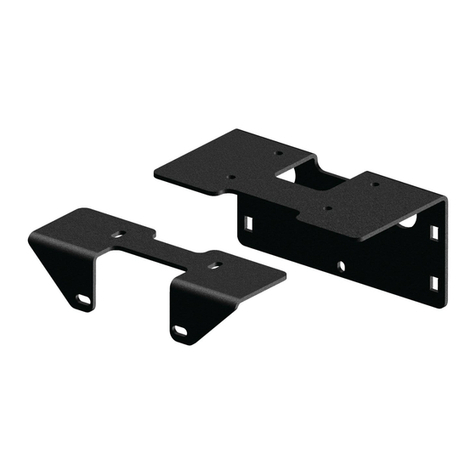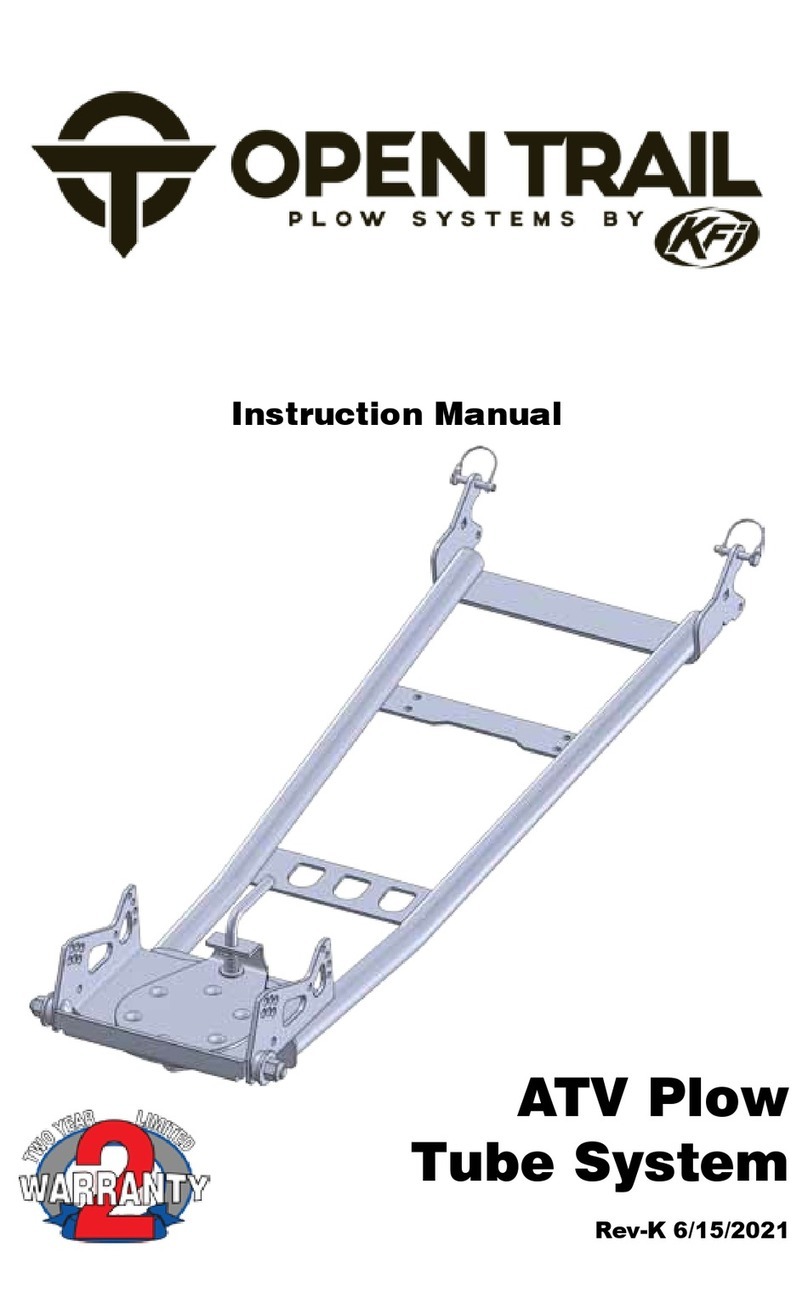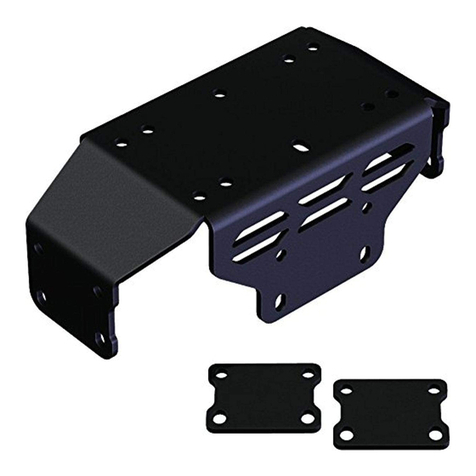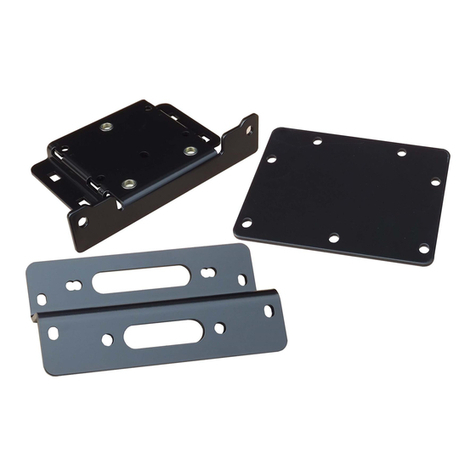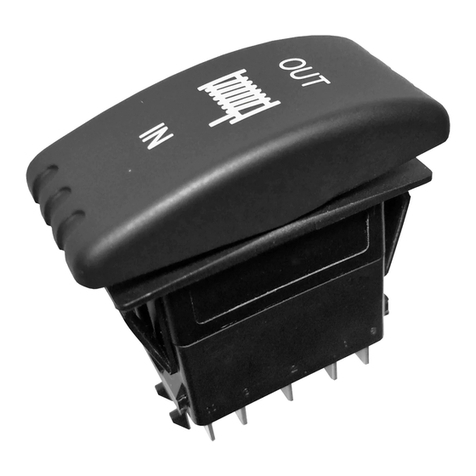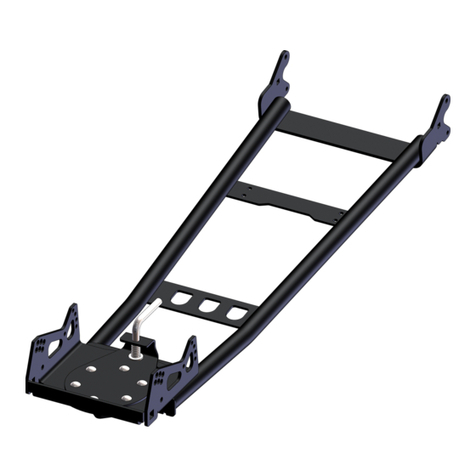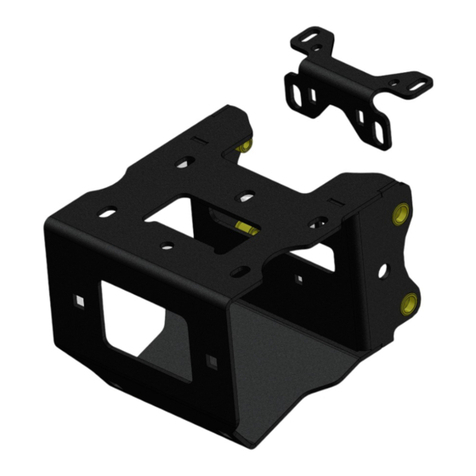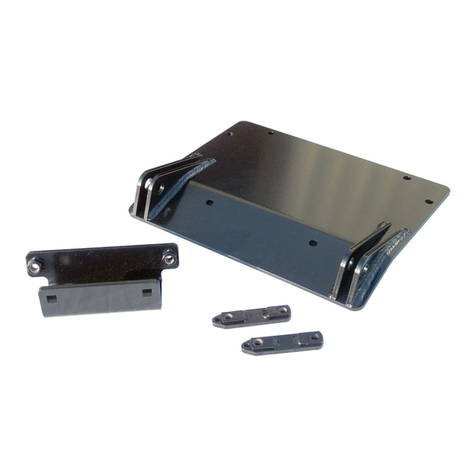
Installation
A3000 7
Step 4-Mount the Hand
Remote Socket (Optional)
1. Determine a mounting location for the
hand remote socket. Make sure the area
behind your selected location is clear.
2. Drill the three holes as shown in the
figure on page 6 and install using the
supplied hardware. You can use the
rubber cap as a template.
3. Once your remote socket is mounted you
can route the wires back to where your
contactor is located.
4. Splice the end of the red wire to an
ignition (keyed) controlled power source
using the supplied wire splice. You may
need to use a test light to locate a
suitable wire. The wire should only have
power when the key is in the ON
position.
5. Secure the cable with the supplied cable
ties
Step 5-Wiring the Winch
CAUTION
Never route electrical cables across any sharp
edges, through or near moving parts, or near
parts that become hot
CAUTION
When attaching wires to the motor or contactor
terminals, hold the inner nut with a wrench while
tightening the outer nut with a second wrench.
Do NOT allow the terminals to rotate in their
housings. Rotation may cause internal wire
breakage or grounding. See Proper Terminal
Tightening Figure.
NOTE
Depending on the location of the contactor, you
may need to use the black and red cables in
place of the yellow and blue, and the yellow and
blue in place of the red and black. Just
remember that this also changes the diagram.
1. Connect the yellow and blue cables to
the motor terminals on the winch. Note
caution above. Route the other ends to
the contactor location.
(See diagram on page 8)
2. Connect the yellow and blue cables to
the contactor (yellow to yellow and blue
to blue). Do NOT tighten nuts.
(See diagram on page 8)
3. Connect the red and black cables to your
contactor (red to red and black to black).
Do NOT tighten nuts. Route the other
ends to your battery location.
(See diagram on page 8)
4. Connect the Handle bar switch to the
contactor. (black to black and green to
green) (See diagram on page 9)
NOTE
If you are installing the remote socket along with
the handlebar switch you will need to connect
the remote socket to the contactor and then the
handlebar switch to the remote socket.
(See diagram on page 9)
5. Once all wiring is connected to the
contactor you can then mount it using
the supplied M6 hardware.
6. Torque the contactor terminal nuts to
4.5 N-m (40 lb-in). Do NOT over
tighten.
7. Place all terminal boots over terminals
and secure all cables with zip ties or
electrical tape.
8. Connect the battery leads from the
contactor to the ATV’s Battery (red to
red and black to black)
(See diagram on page 8)
CAUTION
Battery cables should not be drawn taut. Leave
some slack for cable movement.
9. Check for proper drum rotation. Turn
the clutch cap to the “FREESPOOL”
position. Pull out some cable from the
drum, and then turn the clutch cap to
the “ENGAGE” position to engage the
gears. Make sure your machine is
running and press the cable out button
on the switch. If the drum is turning and
releasing more cable, then your
connections are accurate. If the drum is
turning and collecting more cable, then
reverse the leads on the motor. Repeat
and check rotation.
Proper
Terminal
Tightening






